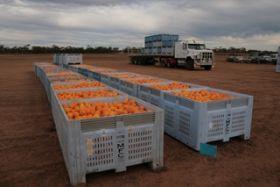
A delegation from Australia’s Sunraysia district will visit Thailand and South Korea later this month to help increase exports to the Asian nations.
The delegation will consist of leading citrus growers, packers, and exporters, as well as representatives from Citrus Australia and the Victorian Department of Primary Industries.
The Victorian Department of Primary Industries senior project officer market access and competitiveness Stephen Baud told Fruitnet.com the group will depart Australia for Thailand on 25 January, then return to Australia on 2 February after spending three days in Korea.
The thrust of the Thailand and Korean market visits would involve forging trade relationships, while developing a better understanding of current protocol requirements.
“South Korea was a significant export market up until 2006, but the strict quarantine protocol has made it challenging for Australian exporters to access this market, ” said Baud.
The two most problematic pests, said Baud, are Fullers Rose Weevil (FRW) and Red Scale, both of which Korea has nil tolerance for. Several growers have adopted an orchard systems approach which has shown some initial success for FRW but Red Scale remains a problem.
“While in Korea, the delegation will meet with the Australian Agricultural Counsellor to discuss the current citrus protocol and scope to further improve its workability for growers and exporters,” said Baud.
“Another objective is to introduce the Australian delegation to some of the key importers in Korea, to help build a better understanding of their particular requirements,” he added.
Citrus Australian CEO Judith Damiani told Fruitnet.com developing commercial trade into key export markets was crucial for the citrus industry.
South Korea, China, and Thailand have all been identified as potentially significant markets for the Australian citrus industry, she said.“Developing the South Korean market is so important that we have written it into our new 5-year R&D plan, and will therefore be dedicating significant industry resources to achieve our goal,” Damiani told Fruitnet.com. “We will also be consulting with growers to increase the R&D levy over the next couple of months.”
The R&D plan aims to increase citrus exports to Korea, from currently negligible levels to 10,000 tonnes annually, with a Free On Board (FOB) value of A$15m annually.
Other issues also need to be addressed, she added, including the country’s increasing cost of production, quality standards, and possible tariff reductions with the upcoming Australia-South Korea Free Trade Agreement (FTA).
The trip has been facilitated by the Department of Primary Industries Victoria in partnership with Citrus Australia, the Department of Business and Innovation Victoria, and Austrade.
In 2011 a delegation of South Australian Vitor growers visited South Korea and plans are underway for a group of packers, growers and exporters from the Murray Valley to visit South Korea and Thailand later in the year, said Damiani.



